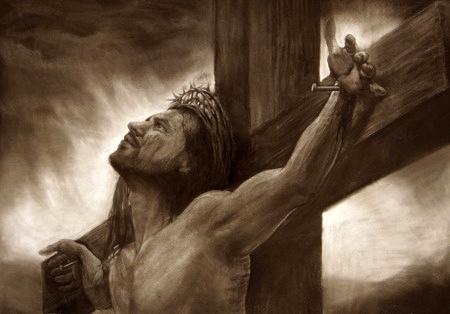
I remember going through physical therapy for the healing of an injured shoulder. As I began my stretching exercises, pain shot through my muscles. It felt just like the pain that accompanied the injury. When I complained about this, the therapist smiled and said, “Oh, that’s good pain; you are awakening muscles that you’ve not been using for a while.” Though good and bad pain both felt the same, “good pain” carried with it a sense of hope. It was an indication that health was just around the corner.
When we see meaning in suffering, we can better accept it, because meaning releases the medicine of hope.
St. Paul talked about “good pain” in his writing to the Romans (8:18-25).
“I consider that the sufferings of the present time are as nothing compared with the glory to be revealed for us.”
For Christians, suffering is an indication that a day of glory is right around the corner.
“For creation awaits with eager expectation the revelation of the children of God…in hope that itself would be set free from slavery to corruption and share in the glorious freedom of the children of God.”
When creation witnesses the “glorious freedom of the children of God,” it experiences hope that it too will be set free from slavery.
“We know that creation is groaning in labor pains even until now; and not only that, but we ourselves, who have the first fruits of the Holy Spirit, we also grown within ourselves as we wait for adoption…”
When a woman begins having labor pains, it is the indication that one of the greatest moments in her life is about to take place. As excruciating as labor pains are, they are “good pain” because they announce with confidence that a new child is about to be born. No event is as great as the birth of a baby, and so it makes sense that no pain is as great as labor pains.
And, though we are the first fruits of the Holy Spirit—we have already been born again by water and the Holy Spirit—we still have another birth awaiting us. A second birth is on its way.
Paul uses the word “hope” five times in the conclusion of this passage.
“For in hope we were saved. Now hope that sees for itself is not hope…But if we hope for what we do not see, we wait with endurance.”
Knowing our suffering indicates that something new is about to be born, we learn, through the Holy Spirit, to practice the art of patient endurance. We know that what we wait for will definitely happen, and it will be well worth the wait.
Daily evidence convinces us that our world is in the throes of suffering. Not having the hope given by the Holy Spirit, the world has but one choice—to find ways of eliminating the suffering. And so it has concocted an amazing variety of solutions to pain. It sees pain as a problem to fix rather than a sign that new birth is about to take place. This is all that “secular” vision can give. And when “hope-less-ness” prevails, the final option is facilitating death. Thus we live in what John Paul II called the “culture of death.”
When, however, the world sees us rejoicing even amid sufferings, it gets a dose of hope—knowing that it is only a matter of time before it, too, will share in the “glorious freedom of the children of God.”
“Those who sow in tears shall reap rejoicing” (Ps 126:4).
